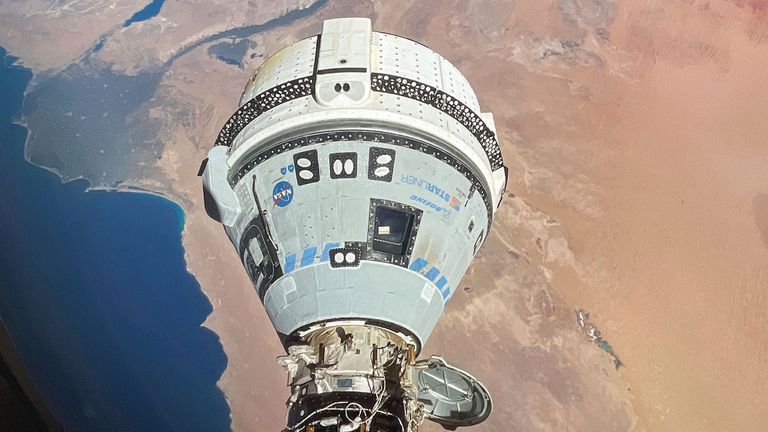There are worse places to suffer a travel delay than on the International Space Station.
At least astronauts Butch Wilmore and Suni Williams get to gaze at the planet rotating beneath them as they wait for engineers to work out what’s gone wrong with their spacecraft’s thrusters so they can fly home.
In a news conference from the ISS, they certainly seemed to be having a good time, helping out with science experiments and maintenance – and taking photos of tropical storms.
But for Boeing the technical glitches with the Starliner, on its first crewed test flight, are yet another embarrassment.
The company is already under close scrutiny after an aircraft door blew out mid-flight, two crashes and delays in delivering new Air Force One planes for the US president.
It could do without problems in orbit too.
But Starliner’s development has been bumpy, to say the least.
An early, uncrewed mission ran out of fuel, while another had thruster issues as it approached the space station.
Then the first test flight with astronauts on board, initially scheduled last year, was delayed because flammable tape was found to be wrapped around wiring and a serious problem was identified with the parachute used to return safely to Earth.
Mr Wilmore defended Boeing during the news conference, saying all spacecraft have problems while they are being developed.
But SpaceX was commissioned to develop a spacecraft in 2014 at the same time as Boeing. It got its safety certificate four years ago and has flown eight crews so far.
Boeing bristles at any suggestion that the astronauts are stranded in space.
They could be brought home now if necessary, it says.
But it’s trying to understand the problem with the thrusters before they get burned up in the atmosphere on re-entry.
As for the astronauts, they seem really impressed with the Starliner’s performance, apart from the thruster issue.
And they have full confidence that the spacecraft will get them home.

